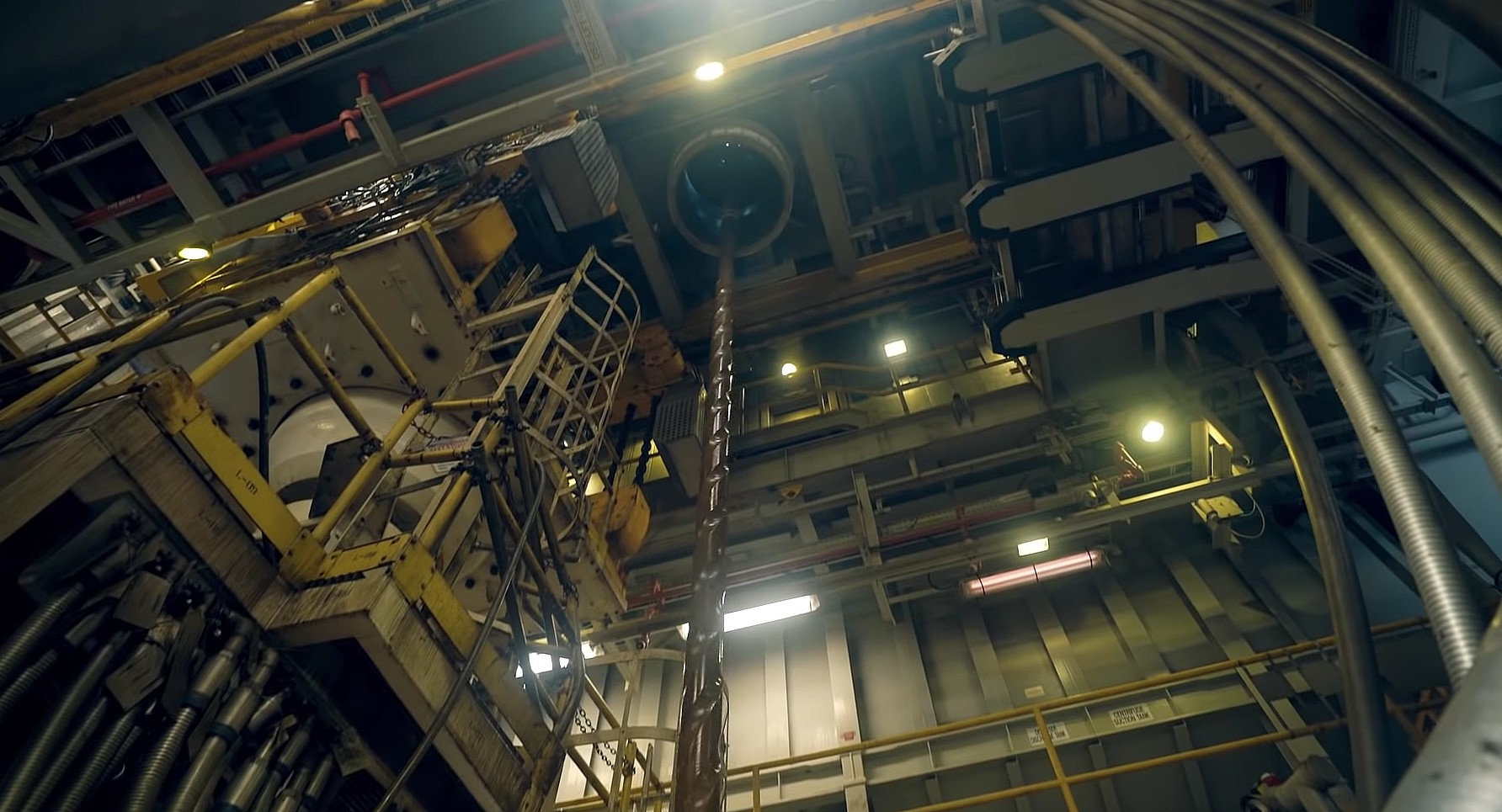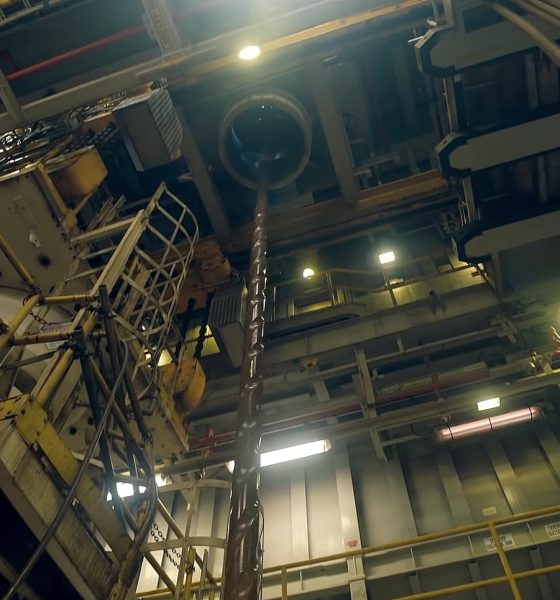

News
Exxon Mobil kicked off from S&P 500’s Top 10 list for the first time in 90 years
Texas-based oil giant Exxon Mobil Corp. has long been a mainstay in the S&P 500’s Top 10 list, but its tenure as one of Wall Street’s biggest companies is starting to show some cracks. As indicated by month-end company weightings recently published by the S&P Dow Jones Indices, Exxon has been kicked off the S&P 500’s Top 10 list, the first time since the index was conceived 90 years ago.
Visa Inc. has replaced Exxon Mobil as the 10th-largest member of the S&P 500 by weighting on August 1. Two weeks later, American multinational consumer goods corporation Procter & Gamble also overtook the Texas-based oil veteran. Exxon Mobil currently stands as the 12th largest company in the S&P 500, a far cry from its 1st-place ranking in 2009.
Tom Sanzillo, director of the Institute for Energy Economics and Financial Analysis, noted in a statement to Bloomberg that the oil sector is currently facing challenges, particularly as several regions across the globe seem intent on moving away from fossil fuels. “The oil sector has gone from being the leader of the world economy to a laggard,” he said.
In what could only be described as a sign of the changing times, six out of ten companies in the S&P 500’s Top 10 list are connected to the tech sector. Among these are Microsoft, Apple, and Alphabet, all of which are currently engaged in active programs aimed at embracing sustainability. Apple, for example, uses recycled metals for its premium devices like the MacBook Air and Mac mini, while Microsoft has pledged to cut its carbon emissions by 75% by 2030.
In a segment on CNBC during a particularly volatile time for oil stocks last year, Paul Sankey of Mizuho Securities described a phenomenon known as the “Tesla Effect” that is starting to make its way to the oil industry. “Essentially, the big issue is the so-called ‘Tesla Effect,’ the general ‘End of the Oil Age’ theme that is a problem for these (oil) stocks. The Tesla Effect is the overall concept that (while) the 20th century was driven by oil, the 21st century will be driven by electricity. There’s a 30-year transition, and we’re somewhere probably 10 years into that transition. Ultimately, (the) terminal value of oil has been severely affected by the potential for us to change behavior,” the analyst said.
Exxon’s departure from the S&P 500’s Top 10 list did not happen overnight. While the oil giant was the index’s largest company in 2009, it has seen a steady decline over the past years. Ten years ago, Exxon’s weight in the S&P 500 was a considerable 5%. Today, it is a more far more humble 1%, according to data aggregated by Bloomberg.
Also aggravating Exxon Mobil’s exit from the S&P 500’s Top 10 list is the volatility of oil and gas prices, as well as notable price slumps, and overarching concerns about oil demand. These factors have made the energy sector in the S&P 500 one of the worst performers in recent months. This year alone, the S&P 500’s energy sector is being outperformed by other sectors in the index such as real estate, communications, and consumer staples, among others.

News
Nvidia CEO Jensen Huang explains difference between Tesla FSD and Alpamayo
“Tesla’s FSD stack is completely world-class,” the Nvidia CEO said.

NVIDIA CEO Jensen Huang has offered high praise for Tesla’s Full Self-Driving (FSD) system during a Q&A at CES 2026, calling it “world-class” and “state-of-the-art” in design, training, and performance.
More importantly, he also shared some insights about the key differences between FSD and Nvidia’s recently announced Alpamayo system.
Jensen Huang’s praise for Tesla FSD
Nvidia made headlines at CES following its announcement of Alpamayo, which uses artificial intelligence to accelerate the development of autonomous driving solutions. Due to its focus on AI, many started speculating that Alpamayo would be a direct rival to FSD. This was somewhat addressed by Elon Musk, who predicted that “they will find that it’s easy to get to 99% and then super hard to solve the long tail of the distribution.”
During his Q&A, Nvidia CEO Jensen Huang was asked about the difference between FSD and Alpamayo. His response was extensive:
“Tesla’s FSD stack is completely world-class. They’ve been working on it for quite some time. It’s world-class not only in the number of miles it’s accumulated, but in the way it’s designed, the way they do training, data collection, curation, synthetic data generation, and all of their simulation technologies.
“Of course, the latest generation is end-to-end Full Self-Driving—meaning it’s one large model trained end to end. And so… Elon’s AD system is, in every way, 100% state-of-the-art. I’m really quite impressed by the technology. I have it, and I drive it in our house, and it works incredibly well,” the Nvidia CEO said.
Nvidia’s platform approach vs Tesla’s integration
Huang also stated that Nvidia’s Alpamayo system was built around a fundamentally different philosophy from Tesla’s. Rather than developing self-driving cars itself, Nvidia supplies the full autonomous technology stack for other companies to use.
“Nvidia doesn’t build self-driving cars. We build the full stack so others can,” Huang said, explaining that Nvidia provides separate systems for training, simulation, and in-vehicle computing, all supported by shared software.
He added that customers can adopt as much or as little of the platform as they need, noting that Nvidia works across the industry, including with Tesla on training systems and companies like Waymo, XPeng, and Nuro on vehicle computing.
“So our system is really quite pervasive because we’re a technology platform provider. That’s the primary difference. There’s no question in our mind that, of the billion cars on the road today, in another 10 years’ time, hundreds of millions of them will have great autonomous capability. This is likely one of the largest, fastest-growing technology industries over the next decade.”
He also emphasized Nvidia’s open approach, saying the company open-sources its models and helps partners train their own systems. “We’re not a self-driving car company. We’re enabling the autonomous industry,” Huang said.
Elon Musk
Elon Musk confirms xAI’s purchase of five 380 MW natural gas turbines
The deal, which was confirmed by Musk on X, highlights xAI’s effort to aggressively scale its operations.

xAI, Elon Musk’s artificial intelligence startup, has purchased five additional 380 MW natural gas turbines from South Korea’s Doosan Enerbility to power its growing supercomputer clusters.
The deal, which was confirmed by Musk on X, highlights xAI’s effort to aggressively scale its operations.
xAI’s turbine deal details
News of xAI’s new turbines was shared on social media platform X, with user @SemiAnalysis_ stating that the turbines were produced by South Korea’s Doosan Enerbility. As noted in an Asian Business Daily report, Doosan Enerbility announced last October that it signed a contract to supply two 380 MW gas turbines for a major U.S. tech company. Doosan later noted in December that it secured an order for three more 380 MW gas turbines.
As per the X user, the gas turbines would power an additional 600,000+ GB200 NVL72 equivalent size cluster. This should make xAI’s facilities among the largest in the world. In a reply, Elon Musk confirmed that xAI did purchase the turbines. “True,” Musk wrote in a post on X.
xAI’s ambitions
Recent reports have indicated that xAI closed an upsized $20 billion Series E funding round, exceeding the initial $15 billion target to fuel rapid infrastructure scaling and AI product development. The funding, as per the AI startup, “will accelerate our world-leading infrastructure buildout, enable the rapid development and deployment of transformative AI products.”
The company also teased the rollout of its upcoming frontier AI model. “Looking ahead, Grok 5 is currently in training, and we are focused on launching innovative new consumer and enterprise products that harness the power of Grok, Colossus, and 𝕏 to transform how we live, work, and play,” xAI wrote in a post on its website.
Elon Musk
Elon Musk’s xAI closes upsized $20B Series E funding round
xAI announced the investment round in a post on its official website.

xAI has closed an upsized $20 billion Series E funding round, exceeding the initial $15 billion target to fuel rapid infrastructure scaling and AI product development.
xAI announced the investment round in a post on its official website.
A $20 billion Series E round
As noted by the artificial intelligence startup in its post, the Series E funding round attracted a diverse group of investors, including Valor Equity Partners, Stepstone Group, Fidelity Management & Research Company, Qatar Investment Authority, MGX, and Baron Capital Group, among others.
Strategic partners NVIDIA and Cisco Investments also continued support for building the world’s largest GPU clusters.
As xAI stated, “This financing will accelerate our world-leading infrastructure buildout, enable the rapid development and deployment of transformative AI products reaching billions of users, and fuel groundbreaking research advancing xAI’s core mission: Understanding the Universe.”
xAI’s core mission
Th Series E funding builds on xAI’s previous rounds, powering Grok advancements and massive compute expansions like the Memphis supercluster. The upsized demand reflects growing recognition of xAI’s potential in frontier AI.
xAI also highlighted several of its breakthroughs in 2025, from the buildout of Colossus I and II, which ended with over 1 million H100 GPU equivalents, and the rollout of the Grok 4 Series, Grok Voice, and Grok Imagine, among others. The company also confirmed that work is already underway to train the flagship large language model’s next iteration, Grok 5.
“Looking ahead, Grok 5 is currently in training, and we are focused on launching innovative new consumer and enterprise products that harness the power of Grok, Colossus, and 𝕏 to transform how we live, work, and play,” xAI wrote.








